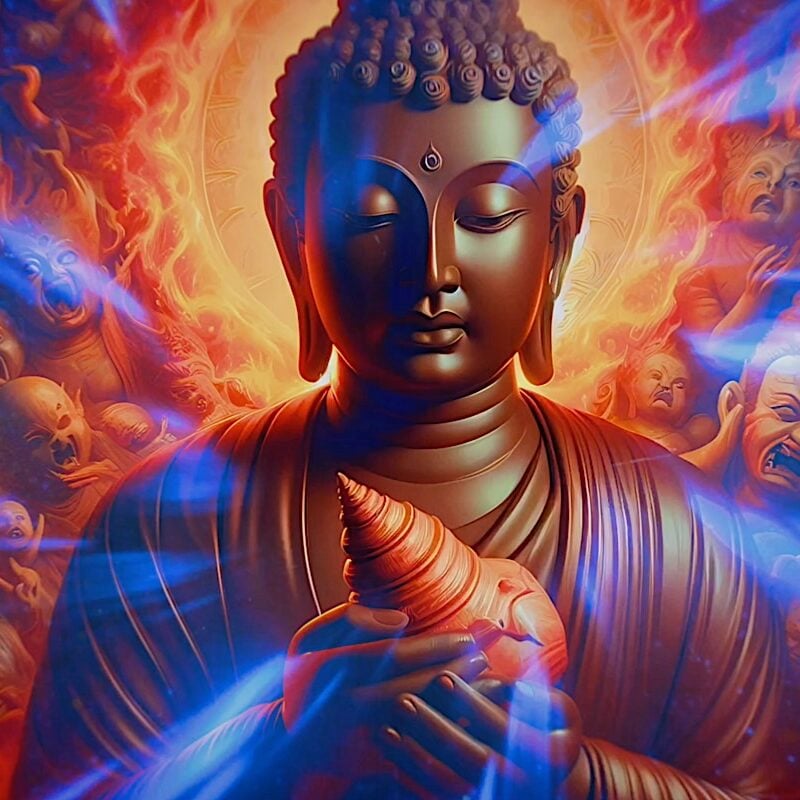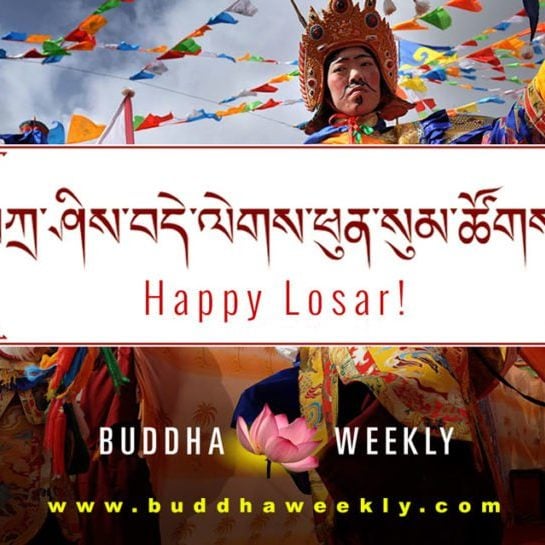HAPPY NEW YEAR! Auspicious Buddhist traditions for New Year. Celebrating with joy, optimism, and compassion — for the benefit of all sentient beings!
Buddhists around the world celebrate different New Year dates around the world — although the traditions of warm wishes of good fortune and celebration are common to all of them. Why so many dates? Calendar New year is based on the western solar-based calendar. Chinese New Year is based on the lunisolar lunar calendar, while Tibetan New Year is based on the unadjusted lunar calendar. Other “New Year’s” celebrations mark different traditions.

Western New Year falls on January 1 each year, while Mahayana Buddhist New Year, Chinese New Year, Theravadan New Year and Tibetan New Year are all celebrated on different dates on the lunar calendar. Some of us celebrate them all — not just as an excuse for wishing our fellow sentient beings good fortune and auspiciousness, but also — well, who doesn’t like a celebration? It is also a time of dedicated Dharma practice, especially for the purification of past negativities. When are these various dates?

Dates of New Year 2023
- Calendar New Year: January 1 each year
- Mahayana Buddhist New Year, in 2023: January 7. For information, see>>
- Chinese Lunar New Year, in 2023: Jan 22. For information, see>>
- Tibetan Lunar New Year, in 2023: Feb 21. For information, see>>
- Theravadan New Year Songkran, in 2023: April 6. For information, see>>

Each of these New Year dates are full of symbolism and meaning. One popular New Year tradition is to set off fireworks, which represent the brightness and joy of the New Year. Another common New Year practice is to ring bells, which symbolize good fortune and hope for the New Year ahead. Additionally, many Buddhists will visit temples on New Year’s Day to pray for blessings and prosperity for the year ahead. In Tibetan tradition, prior to New Year (which falls on February 21 this year!) we engage in purification practices, such as Vajrasattva, to purify all obstacles and negativities as we go into a new year.

Common traditions for New Years in Buddhism
Common to all (most) Buddhist traditions are:
- Celebrate with light to bring in an optimistic New Year. This can be fireworks, candles on altars, colorful lanterns and other festive lights.
- Dharma activities, such as reading Sutra
- Generosity to others — giving to set the tone for aupsiciousness
- First “sight” of the New Year ideally should be a Buddha image (sometimes known as Darshan)
- Wishing others a Happy New Year, good fortune, health and happiness.

Wishing you a wonderful New Year filled with joy, love, and peace. Happy New Year!
Appendix: Linosolar lunar versus lunar
The months in a lunisolar calendar are based on the repeating phases of the Moon. To keep up with the solar year and season, however, some additional intercalation rules must be applied to balance out lunar cycles with those of sun-based calendars. As such, it is distinct from regular lunar calendars which lack this “adjustment.”
More articles by this author
Search
Latest Features
Please support the "Spread the Dharma" mission as one of our heroic Dharma Supporting Members, or with a one-time donation.
Please Help Support the “Spread the Dharma” Mission!

Be a part of the noble mission as a supporting member or a patron, or a volunteer contributor of content.
The power of Dharma to help sentient beings, in part, lies in ensuring access to Buddha’s precious Dharma — the mission of Buddha Weekly. We can’t do it without you!
A non-profit association since 2007, Buddha Weekly published many feature articles, videos, and, podcasts. Please consider supporting the mission to preserve and “Spread the Dharma." Your support as either a patron or a supporting member helps defray the high costs of producing quality Dharma content. Thank you! Learn more here, or become one of our super karma heroes on Patreon.
Lee Kane
Author | Buddha Weekly
Lee Kane is the editor of Buddha Weekly, since 2007. His main focuses as a writer are mindfulness techniques, meditation, Dharma and Sutra commentaries, Buddhist practices, international perspectives and traditions, Vajrayana, Mahayana, Zen. He also covers various events.
Lee also contributes as a writer to various other online magazines and blogs.


















